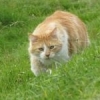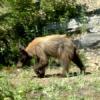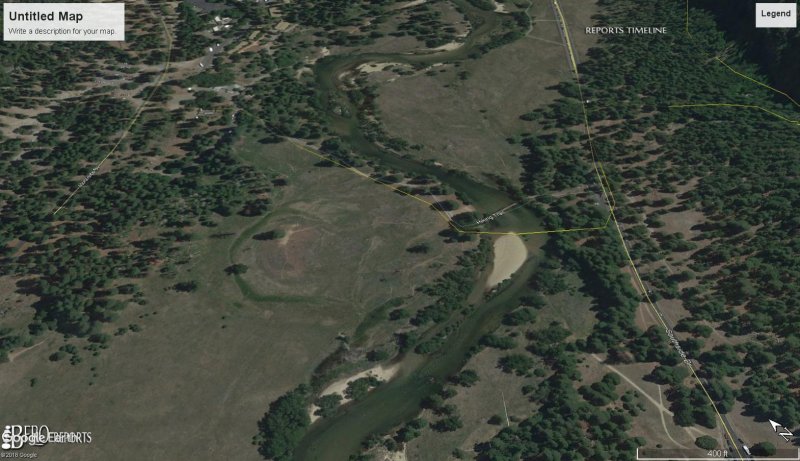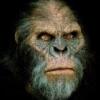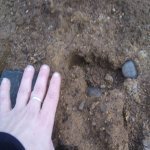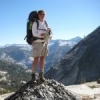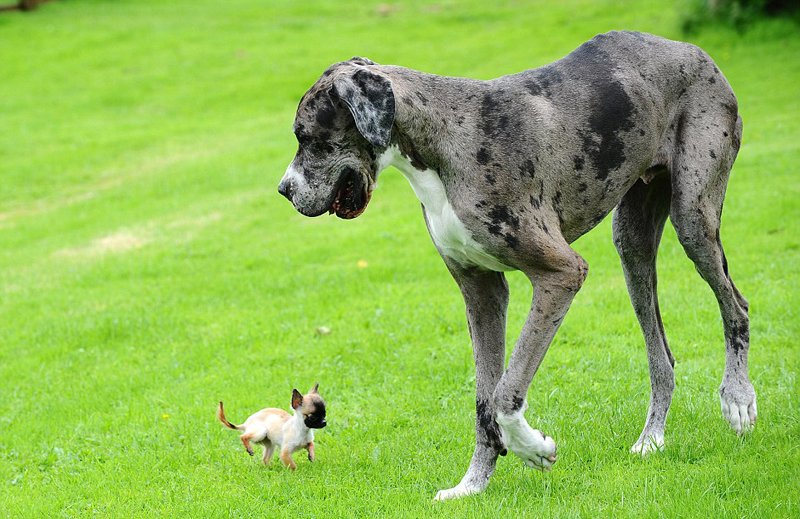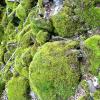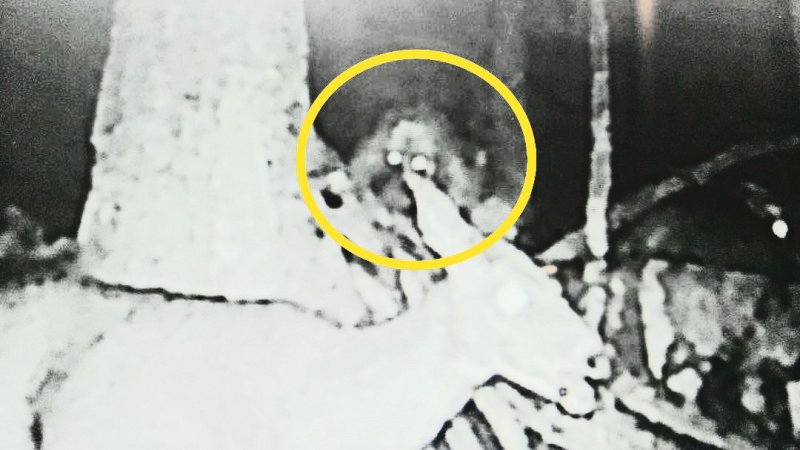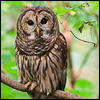Leaderboard
Popular Content
Showing content with the highest reputation on 12/02/2018 in all areas
-
For anyone interested, here is a basic primer on some of Google Earth's functions. My son introduced me to the program 13 years ago this month, shortly after we migrated from dial-up to broadband internet. Since then I have spent uncounted hours using Google Earth, including looking for our elusive bi-pedal primate. While I do use the mobile version of the app on my phone and tablet, it is much more limited in function and can be difficult to navigate at close range compared to the computer version. The following info is for the PC computer version, not sure if or how it may vary on a Mac. A year of two ago, Google made the Pro version available for free to replace the standard version. To ensure you have the latest version, click the Help button in the menu bar and select about. The dialog box should match the following image, if it doesn't just go to the Google Earth home page in your browser and update to the latest version: A quick way to determine if an object is a living creature or a landscape feature is to use the Historical Imagery tool; it is the small clock face icon with a green arrow wrapped around in a counter clockwise direction. To demonstrate I'm using an angled view of Yosemite Valley from about 2,000' above the valley floor. The first image is what shows without activating the function and is from 5/26/14. When you begin using this function you will notice, as in subsequent images, that the newest image may not be the one generally displayed when not using the historical imagery, which is generally the best of recent images. Also, for whatever reason, the views are sometimes out of order with a newer one showing up in an "older" spot on the slider, and sometimes the dates are inconsistent with the image, i.e. an image of a deciduous forest may appear with no leaves showing in an image dated in mid July, or vice-versa. On all but one of these images, I'm using the Snip tool in Windows to save the images rather than the Save Image button second from the right in the tool bar above the image area in the program. The reason is so that all of the tools and information show, which they do not if using the Save Image button as below: This will allow sharing a wider overview of an area without disclosing the actual latitude and longitude, which the OP has expressed a desire to keep confidential. The following are some representative examples of the historical images for this location, though there are many more not shown, more than in less well known areas. Notice that the newest is from 2017, but is of poorer quality than the default 2014 image. The 2012 image, as well as the oldest image from 1987 are both monochrome: The button fifth from the right is a ruler and opens a dialog box that allows measuring distances in miles or kilometers, or the size of smaller objects using meters, yards, feet, inches, etc. It allows straight line and path measuring, as well as some geometric functions I haven't explored: The next image shows a random line measured across the valley floor in feet; note that the result is shown in Map length (point to point), Ground length (accounting for terrain covered) as well as the compass heading of the line: There is an option for saving the measurements which allows the line color, width and transparency to be adjusted. Using the push pin icon in the toolbar allows a location to be saved in the same way. The next two images show the dialog boxes for identifying the location and setting the color of the marker pin and the legend appearing on the screen. You can also change the color of the pin or even select a different icon as I did with the tent icon in the second image. Note on the bar to the left of the image area, there is a box for Places. The last entry now shows the location I just saved highlighted in blue. While I have over a hundred saved locations and paths, they only show up in the image area if the box to the left of the item is checked. Things would be pretty crowded on my screen in some areas if all of the saved locations and paths were showing at the same time. The last item I'll cover is the Photorealistic 3D option (this is also available in the mobile version though the operation is a bit different). This option is relatively recent and new areas are added all the time. The 3-D images are created in a separate operation. The area selected is overflown in a grid pattern by a specially equipped aircraft using eight Hi Def cameras each pointing down at a different angle. The images are compiled by computer algorithm and are pretty spectacular (there is a youtube video explaining the process but you'll have to find it on your own). The option is selected in the Layers section at the bottom of the left hand sidebar. The next image shows the same area in Photorealistic 3-D: Hope this is useful. There are many functions I've never used in Google Earth, but if anyone has questions I'll try to answer.3 points
-
To have the best part of 300 Gray/Yellow/White creatures described is really interesting to me and always has been. There are pockets of them in the SSR and it's something that is most definitely worthy of more time spent analyzing. Iowa/Illinois in the Fall/Winter, the southern part of the Olympics in WA and also the Sullivan Lake area in Eastern WA are all pockets with clustered Gray/White/Yellow Reports over the past few years. --- Squatchermetrics Like This Page · 21 April · #Sasquatch Interesting to note that 56% of all Actual Visual Reports across the North American Continent of Gray Sasquatches from the last 5 years have come from Illinois and Dubuque County, Iowa ( a County that borders Illinois). All of those Reports come from November to April. ---- Squatchermetrics Like This Page · 21 May · #Sasquatch #Squatchermetrics Hair Color. We thought it would be interesting to look at hair coloring around the North American Continent and look to see if there are any regional variations, throughout this week. Results below.. The Pacific Northwest - BC, CA, ID, MT, OR, WA. 637 Actual Visual Reports 189 Reports with No Hair Color description. 448 Reports with Hair Color description. Black = 21% Dark = 15% Dark Brown = 25% Brown = 20% Gray/White/Yellow = 10% Cinnamon = 5% Other = 4% --- SquatchermetricsLike Page 23 May · #Sasquatch #Squatchermetrics Hair Color. We thought it would be interesting to look at hair coloring around the North American Continent and look to see if there are any regional variations, throughout this week. Results below.. The Midwest - IL, IN, IO, KS, MI, MN, MO, ND, NE, OH, SD, WI. 458 Actual Visual Reports 97 Reports with No Hair Color description. 361 Reports with Hair Color description. Black = 21% (Exactly the same as the PNW) Dark = 15% (Exactly the same as the PNW) Dark Brown = 23% (A 2% decrease on the PNW) Brown = 20% (Exactly the same as the PNW) Gray/White/Yellow = 15% (A 5% increase on the PNW) Cinnamon = 4% (A 1% decrease on the PWN) Other = 2%1 point
-
1 point
-
I would imagine the logistics of supplying such an expedition would be both complicated and expensive. Thinking about everything that could go wrong on such a remote adventure is daunting. However, I am coming to the belief, based upon my own experiences and (moreso) of researchers in the local area, maybe the bf's are both close in and far out. Maybe Russian almas are similar? I wonder how we could find folks there similar to us here in our interests? Fun to think about. Bet you could explore Alaska or anywhere in the Canadian North easier if you wanted remote.1 point
-
1 point
-
Or its just a head on a stump with glowing eyes rigged. After a couple days the deer ignore it and come back to the bait. Trail cam snaps a picture..... wallah!1 point
-
1 point
-
1 point
-
I can see that there two deer in that picture. Also the way that the deer look in the picture they have no effect of what is there or not even spooked. I feel like what ever is there is or has been fixed in placed to where these deer are use to it.. I am calling it fake and with out further detail there is no way of saying that this is a true picture of a bigfoot. Those deer are acting normal.1 point
-
Inconclusive. It is a very poor image. It is cropped. A deer that close to a Sasquatch would be running at full speed.1 point
-
I think the best way to apply Google Earth, etc is to look at Mangani's overlay, the SSR, etc and try to figure out where the most probable location for a bigfoot near you is at the particular time you have to be out. Maybe it isn't even in a location with past sightings but is between two concentrations a short time apart. Look for headwaters of streams, saddles between adjacent headwaters, and other topographical features. I do not think any of the pixelated things we see in Google Earth are any better than the blobsquatch photos that have already proven inadequate as a form of proof of existence. I think that's a dead end path, wishful thinking that can lead nowhere. Rather, use GE for mapping in space and time, then go to the spot you find and do whatever it is you do. Look for tracks. Play with trail cams. Record audio. Wood knock. Or, dare I say it, try to collect a specimen. Unless you've got a habituation setting you're working actively there are no guarantees, the best we can ever hope to do is hedge our bets enough to eventually be successful via whatever means we choose. MIB1 point
-
I think its a shadow, look at the other black objects. They all reside on the same side of the boulders indicating a shadow cast by the rock.1 point
This leaderboard is set to New York/GMT-05:00

